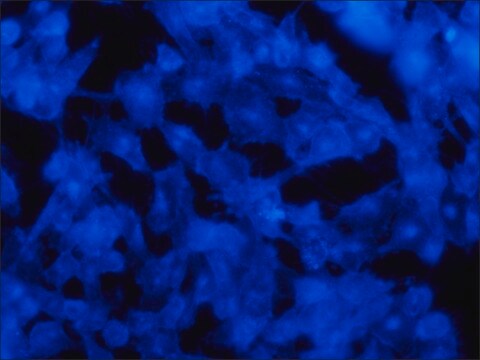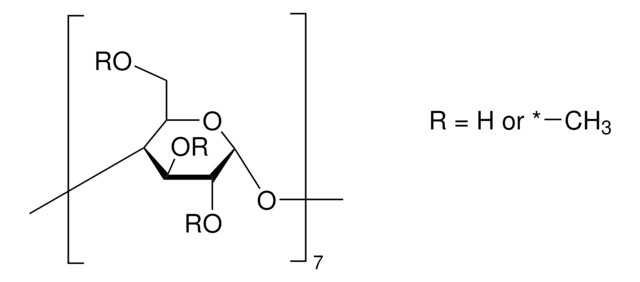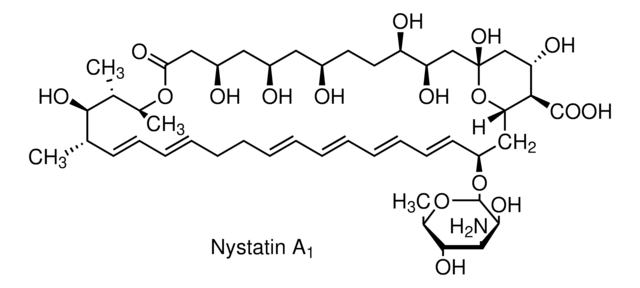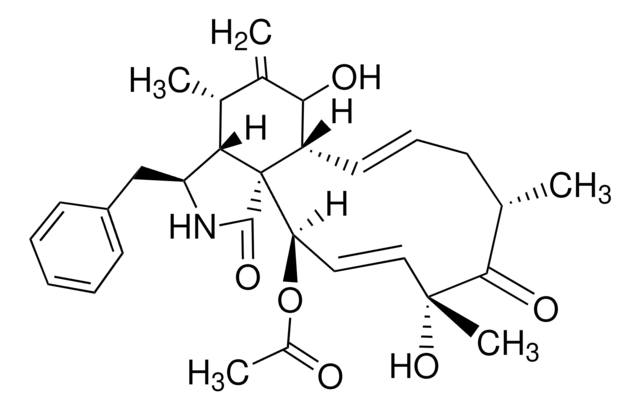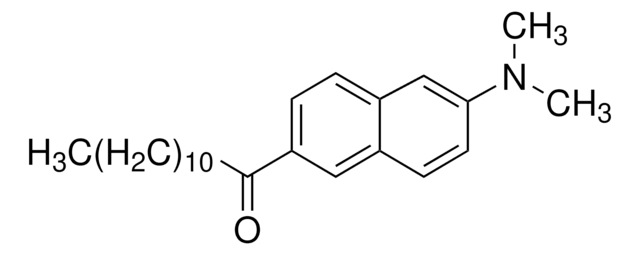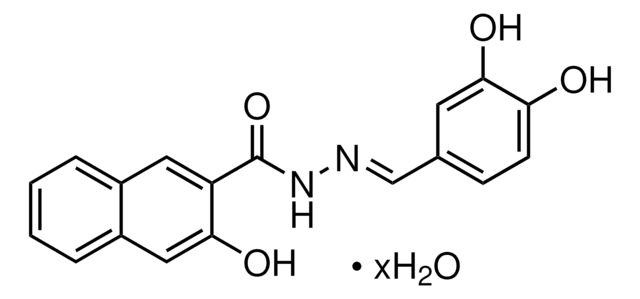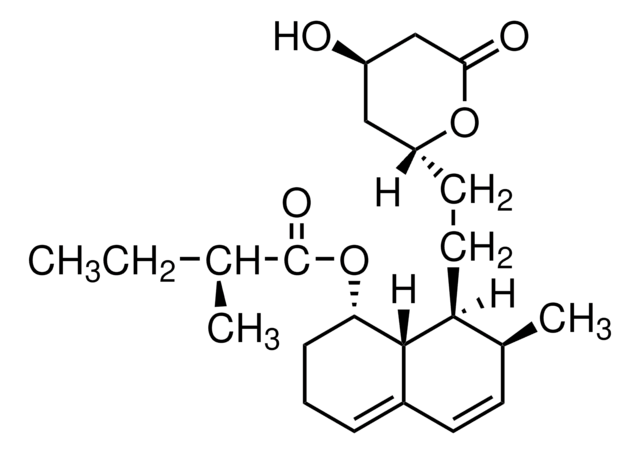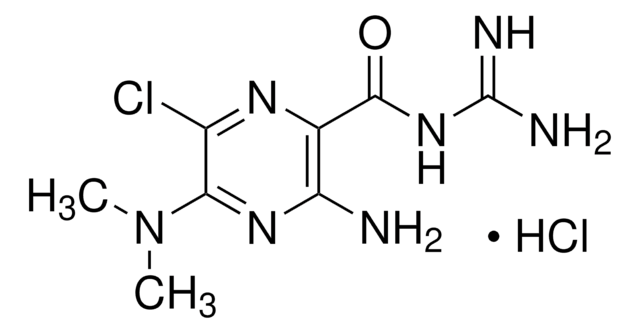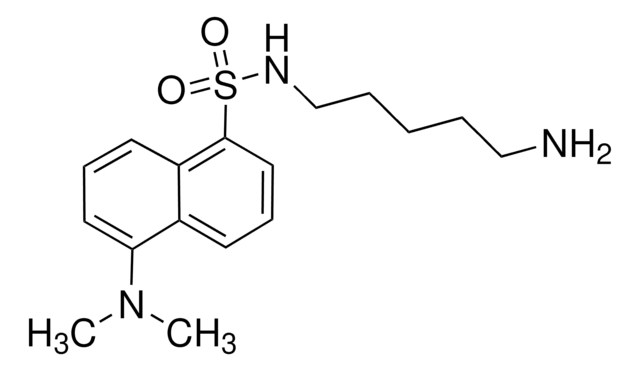F9765
Filipin complex from Streptomyces filipinensis
≥70% (UV)
Synonyme(s) :
Filimarisin
About This Item
Produits recommandés
Source biologique
Streptomyces sp. (Streptomyces filipinensis)
Niveau de qualité
Essai
≥70% (UV)
Forme
powder
Solubilité
methanol: 9.80-10.20 mg/mL, clear to hazy, yellow to very deep greenish-yellow
Spectre d'activité de l'antibiotique
fungi
Mode d’action
cell membrane | interferes
Température de stockage
−20°C
InChI
1S/C35H58O11/c1-4-5-11-16-31(42)34-33(44)22-29(40)20-27(38)18-25(36)17-26(37)19-28(39)21-32(43)23(2)14-12-9-7-6-8-10-13-15-30(41)24(3)46-35(34)45/h6-10,12-15,24-34,36-44H,4-5,11,16-22H2,1-3H3/b7-6+,10-8+,12-9+,15-13+,23-14+/t24-,25+,26-,27+,28-,29+,30+,31-,32+,33+,34-/m1/s1
Clé InChI
IMQSIXYSKPIGPD-YQRUMEKGSA-N
Vous recherchez des produits similaires ? Visite Guide de comparaison des produits
Catégories apparentées
Description générale
Application
Actions biochimiques/physiologiques
Autres remarques
Produit(s) apparenté(s)
Mention d'avertissement
Warning
Mentions de danger
Conseils de prudence
Classification des risques
Eye Irrit. 2 - Skin Irrit. 2 - STOT SE 3
Organes cibles
Respiratory system
Code de la classe de stockage
11 - Combustible Solids
Classe de danger pour l'eau (WGK)
WGK 3
Point d'éclair (°F)
Not applicable
Point d'éclair (°C)
Not applicable
Faites votre choix parmi les versions les plus récentes :
Déjà en possession de ce produit ?
Retrouvez la documentation relative aux produits que vous avez récemment achetés dans la Bibliothèque de documents.
Les clients ont également consulté
Notre équipe de scientifiques dispose d'une expérience dans tous les secteurs de la recherche, notamment en sciences de la vie, science des matériaux, synthèse chimique, chromatographie, analyse et dans de nombreux autres domaines..
Contacter notre Service technique
